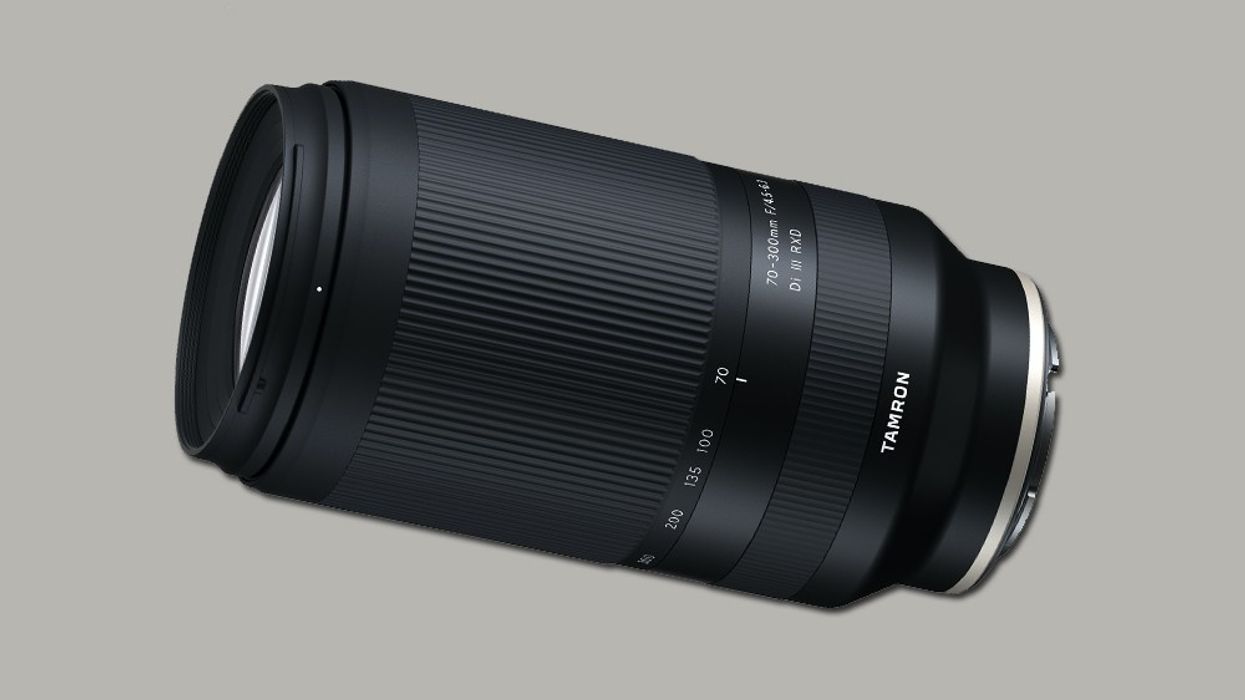Tamron's 70-300mm Telephoto Lens is Compact and Full-Frame
Tamron's new telephoto glass was designed for Sony E-mount.

Tamron has released the 70-300mm F4.5-6.3 Di III RXD, a very light and compact telephoto lens for Sony E-mount mirrorless cameras. It joins a growing list of lenses with a 67mm filter diameter designed for full-frame image capture.
- 28-75mm F/2.8 Di III RXD
- 17-28mm F/2.8 Di III RXD
- 24mm F/2.8 Di III OSD M1:2
- 35mm F/2.8 Di III OSD M1:2
- 20mm F/2.8 Di III OSD M1:2
- 70-180mm F/2.8 Di III VXD
- 28-200mm F2.8-5.6 Di III RXD
- 70-300mm F4.5-6.3 Di III RXD

Optically, the still lens has 15 elements in 10 groups with a low dispersion element to reduce aberrations. Tamron says the lens delivers edge-to-edge sharpness even at 300mm and has its Broad-Band Anti-Reflection coating to minimize reflections. Autofocus is driven by an RXD motor for fast and smooth focus that's quiet enough for video. It's said to be compatible with Sony's Fast Hybrid AF, Eye AF, and in-camera lens correction including shading, chromatic aberration, and distortion. Better yet, it's an internal focusing lens.
While F4.5-6.3 isn't ideal for low light conditions without proper fixtures, it's comparable to more expensive glass designed for cine use that comes in around T2.9-4.0. Image quality is obviously night and day, but at least there's an option out there that won't break the bank. Another third-party full-frame Sony E-mount option is the Sigma 100-400mm F5-6.3 DG DN OS, then there's Sony's FE 70-300mm f/4.5-5.6 G OSS, which in our opinion, is going to give you better image quality than the Tamron.
Better yet, if you want to jump to full-frame cine zoom lenses, Zeiss has its CZ.2 70-200mm T2 and Fujinon has a Premista 80-250mm T2.9. Both pricey, so consider renting them. If you drop down to Super 35 on the Sony camera, it opens up the door to a ton more cine zoom options that are less expensive.
Expect the Tamron 70-300mm F4.5-6.3 Di III RXD to be available late October with a price tag around $549.
Source: Tamron











